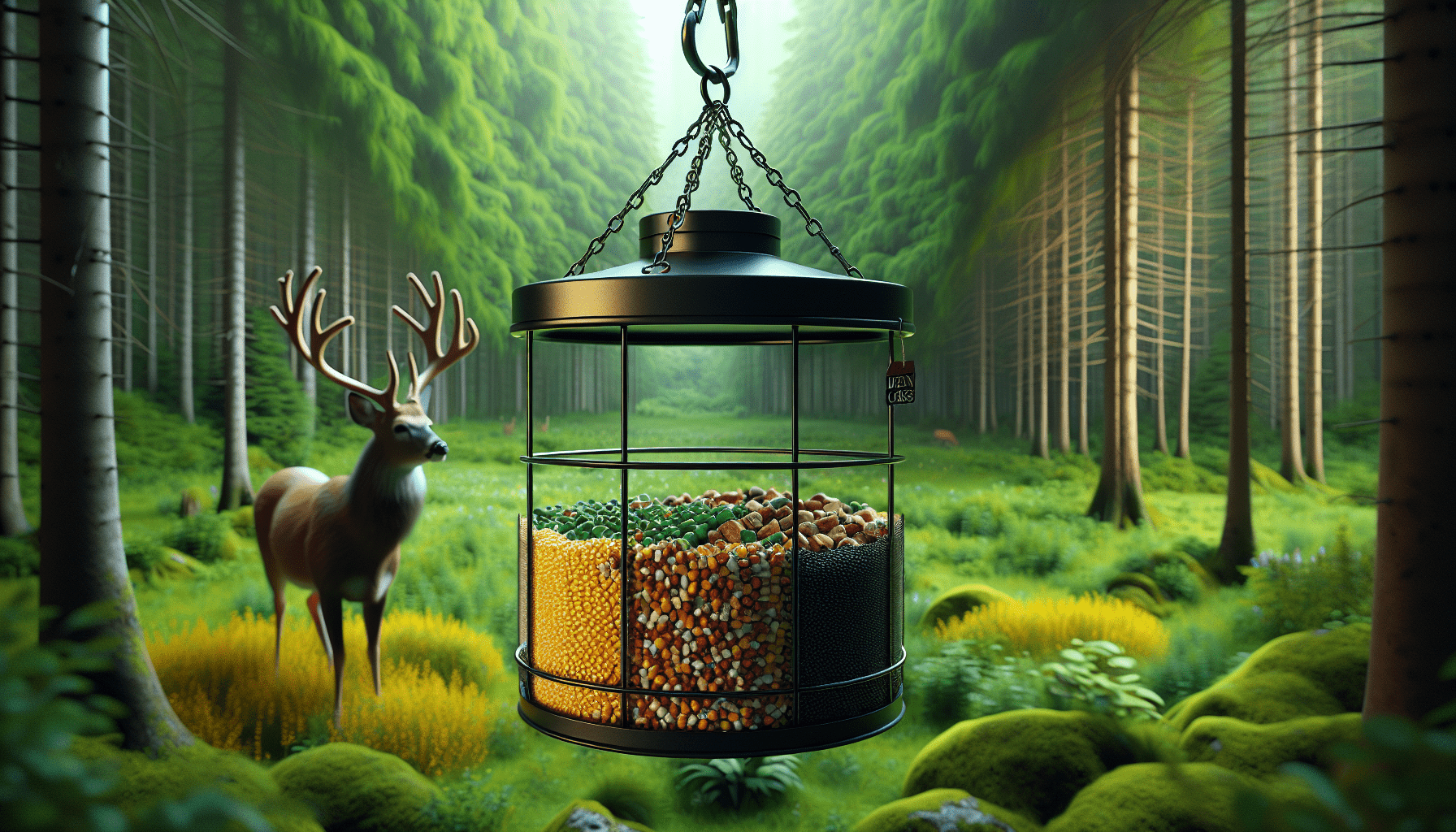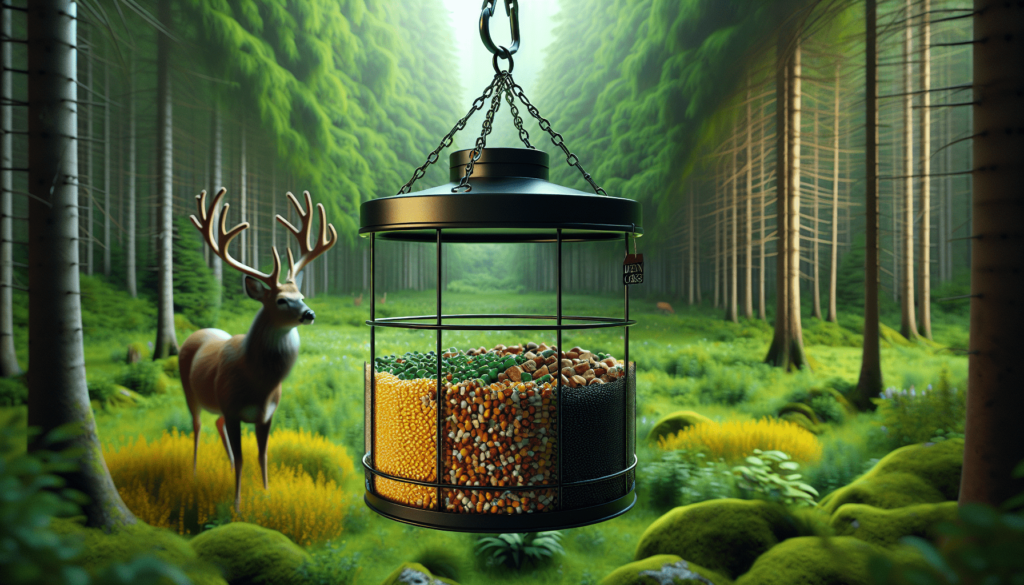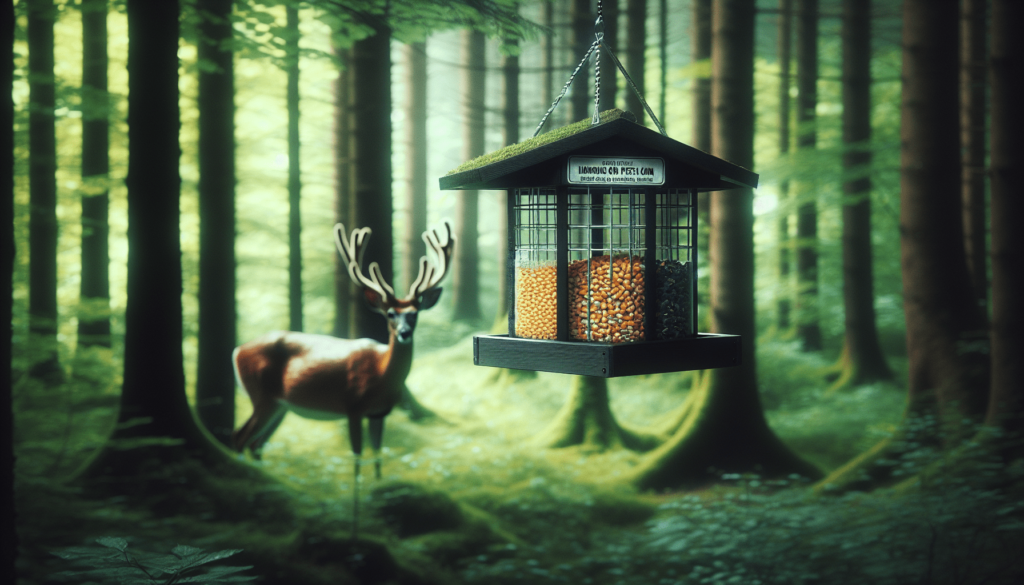
Have you ever wondered how to maximize your hunting success by effectively using hanging deer feeders? Placing these feeders strategically can be the key to attracting deer and improving your chances during hunting season. This guide will provide you with strategies to make the most out of your hanging deer feeders.

Understanding the Importance of Placement
Before you hang your deer feeder, it’s crucial to understand why placement matters. Deer have specific patterns and preferences when it comes to feeding and movement. By placing feeders in the right locations, you can increase the likelihood of attracting deer to your hunting area.
Deer Behavior and Feeding Patterns
Deer are creatures of habit. They follow specific patterns daily, which include particular feeding times and traveling through certain paths. By observing these patterns, you can identify the best spots for your feeders.
Influencing Factors
Several factors can influence where deer feed. These include:
- Availability of Food: Deer are naturally attracted to areas with abundant food sources.
- Cover and Safety: Deer prefer areas where they feel safe from predators.
- Proximity to Water: Access to water is essential, especially in arid regions.
Selecting the Perfect Site
Choosing the right site goes a long way in maximizing the effectiveness of your deer feeder. Let’s break down the essential aspects to consider.
Keep It Hidden But Not Too Hidden
It’s a delicate balance. You want your feeder to be in a somewhat secluded spot where deer feel safe, yet not so hidden that it’s out of the deer’s usual travel route.
Consider Natural Deer Pathways
Observing and understanding natural deer trails can help you place your feeder where deer are more likely to come across it. Look for signs such as deer tracks, droppings, and rub marks on trees.
Proximity to Bedding Areas
Deer tend to feed near their bedding areas. By placing feeders within a reasonable distance, you make it easier for deer to find and use your feeding spot.
Choosing the Right Deer Feeder
With numerous brands and types on the market, selecting the right deer feeder is essential. Let’s look at some trusted brands and their features to help you decide.
| Brand | Key Features |
|---|---|
| Moultrie | Advanced programming, durable construction, and easy to set up |
| American Hunter | Variety of models, durable material, and efficient feeding mechanisms |
| WILDGAME INNOVATIONS | Innovative designs, user-friendly, and reliable |
| SolutionsPatIQ | High capacity, smart features, and robust build |
| Highwild | Cost-effective, easy installation, and reliable feeding |
| Boss Buck | Gravity feeders and high capacity, durable and weather-resistant materials |
| On Time Wildlife Feeders | Precision timing, durable, and efficient |
| Gravity Fed | Simple design, cost-effective, and low maintenance |
| Keilyn | High capacity, easy to use, and strong construction |
| Andee | Versatile models, durable, and practical |
| KUMFJ | Affordable, durable, and user-friendly |
Features to Consider
When selecting a feeder, consider features such as:
- Durability: Sturdy construction that can withstand environmental elements.
- Ease of Use: User-friendly features like easy programming and maintenance.
- Feeding Mechanism: Whether it’s a gravity feeder or a timed release, choose what suits your needs best.
- Capacity: Depending on how often you can refill, choose a feeder with adequate capacity.
Installation Tips
Proper installation is crucial to ensure the feasibility and effectiveness of your deer feeder. Follow these tips to get it right.
Height and Accessibility
Hang your feeder at a height that is safe from other animals but accessible to deer. Usually, 5 to 6 feet above the ground works well. Make sure it’s stable and secure to prevent it from being knocked over.
Weather Protection
Ensure your feeder is protected from extreme weather conditions. Placing it under a tree canopy can provide some shelter from rain and extreme sunlight.
Regular Maintenance
Regularly check your feeder for any damages and ensure it’s functioning correctly. Refilling timely and cleaning the feeder can prevent mold and other issues from arising.

Best Times to Use Deer Feeders
Understanding the best times to hang and refill your deer feeders can significantly impact your success.
Seasonal Considerations
Different seasons affect deer behavior. During fall and winter, when natural food sources are scarce, deer are more likely to rely on feeders.
Preferred Feeding Times
Deer are typically more active during dawn and dusk. Setting your feeder to dispense food around these times can increase deer visitation rates.
Legal and Ethical Considerations
Always ensure you comply with local hunting regulations and ethical guidelines related to feeding wildlife.
Know the Laws
Different states have varying laws regarding the use of feeders. Some areas may restrict feeding during certain times of the year or have specific guidelines on feeder placement.
Ethical Feeding
Ethical considerations include not overfeeding or causing dependency on feeders. Aim to complement the natural diet of deer, not replace it.
Common Mistakes to Avoid
Even seasoned hunters can make errors when placing deer feeders. Learn from these common mistakes to enhance your setup.
Ignoring Deer Patterns
Placing a feeder without considering deer’s natural behavior can make your efforts futile. Always observe and strategize based on their habits.
Overlooking Maintenance
Neglecting feeder maintenance can lead to malfunctions or moldy feed, which can deter deer from using the feeder.
Incorrect Placement
Placing feeders in open or overly exposed areas can scare deer away. Aim for a balance between visibility and seclusion.
Maximizing Effectiveness
To get the most out of your feeder, combine multiple strategies and adapt as necessary.
Rotate Feeder Locations
If deer start avoiding your feeders, try rotating their locations. This can renew interest and keep deer from becoming too wary.
Use Trail Cameras
Trail cameras can provide insights into deer behavior and feeder usage. Monitoring the footage can help you adjust your strategies for better results.
Mix Feed Types
Using a variety of feeds can attract different deer and keep their interest. Experiment with corn, protein pellets, and other attractants.
Case Study: Successful Feeder Placement
To illustrate, let’s look at a practical example of successful feeder placement.
Background
John, an avid hunter, was struggling with poor feeder performance. Despite having a high-quality feeder, he wasn’t attracting much deer.
Approach
John started by observing local deer patterns more closely. He identified a well-traveled deer path and placed his WILDGAME INNOVATIONS feeder near a bedding area, but not too close to disturb the deer.
Results
Within weeks, John noticed increased deer activity around his feeder. By also using a trail camera, he could fine-tune the timing and feeding amounts, ultimately leading to a successful hunting season.
Conclusion
Effectively placing hanging deer feeders can greatly enhance your hunting success. By understanding deer behavior, selecting the right feeder, and employing strategic placement, you can attract more deer to your hunting area. Remember to comply with local regulations and maintain your feeders regularly. With the right approach, you can significantly maximize your hunt. So, are you ready to step up your game this season?



